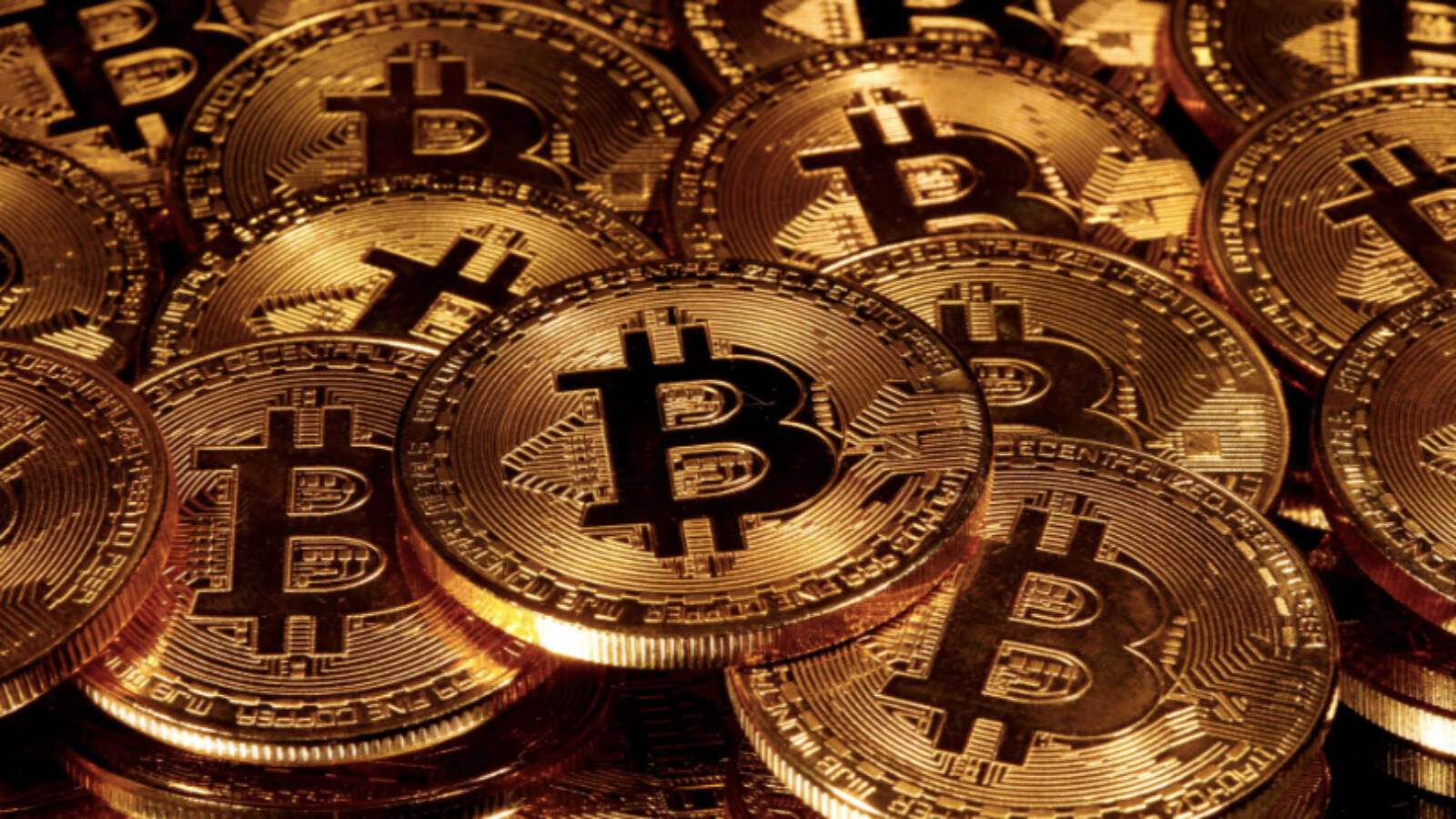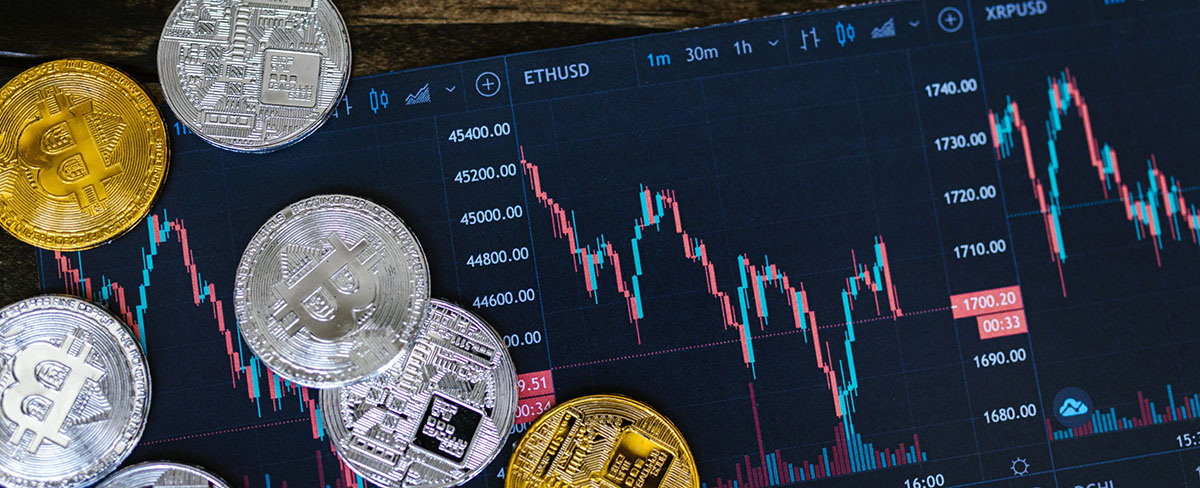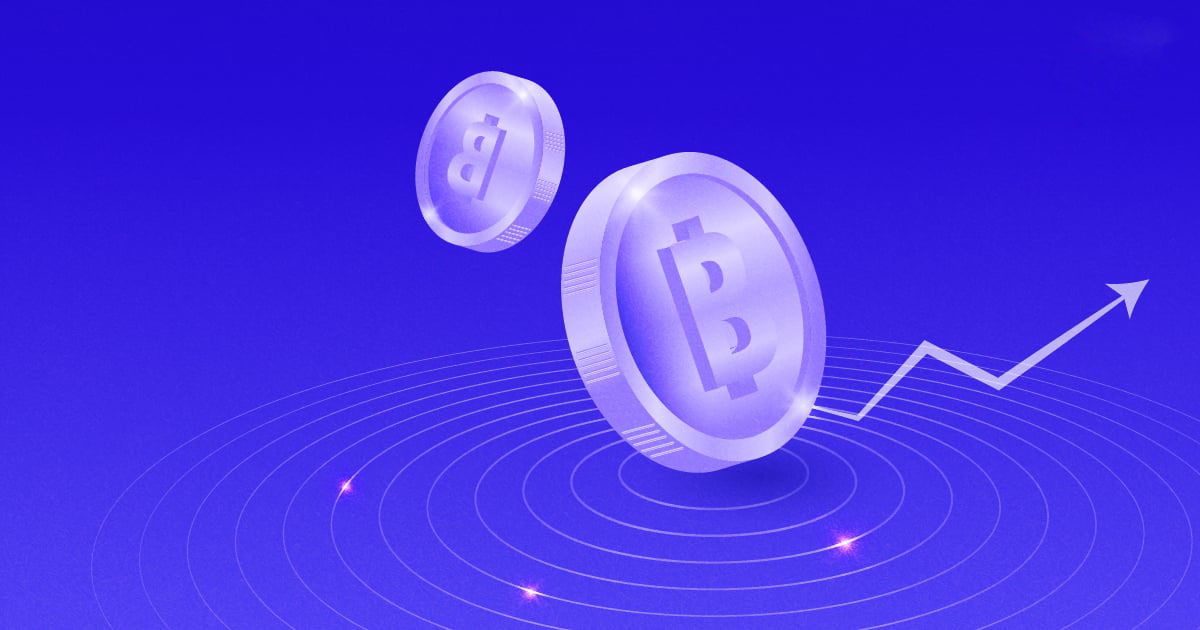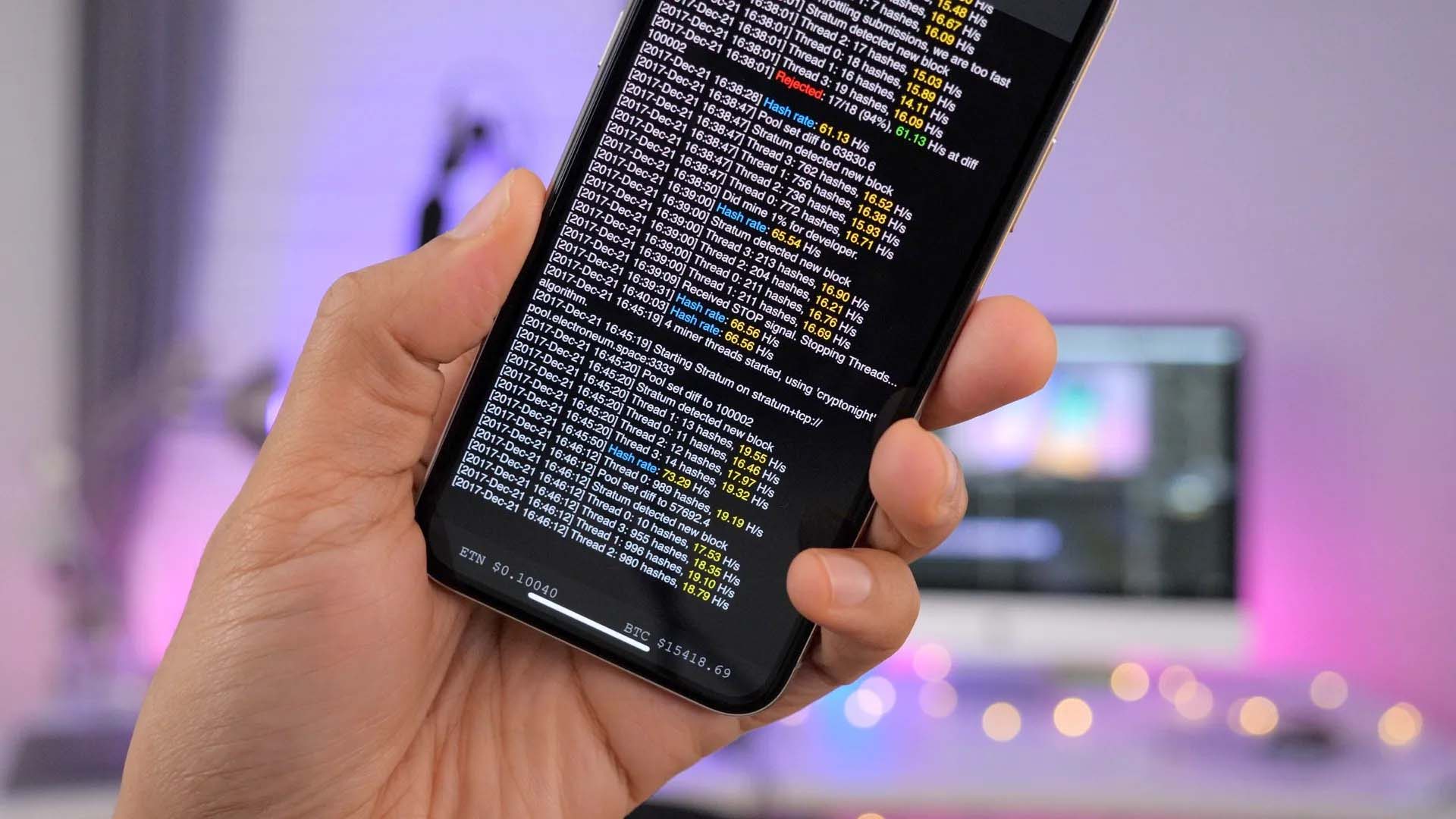

Finance
What Is Pi Cryptocurrency Mining
Published: October 5, 2023
Discover the world of Pi cryptocurrency mining and how it is revolutionizing the finance industry. Learn about the benefits and opportunities it presents for financial growth.
(Many of the links in this article redirect to a specific reviewed product. Your purchase of these products through affiliate links helps to generate commission for LiveWell, at no extra cost. Learn more)
Table of Contents
Introduction
Welcome to the world of cryptocurrency mining! If you are a finance enthusiast or someone who has been following the world of digital currencies, you might have come across the term ‘Pi cryptocurrency’. Pi is a relatively new cryptocurrency that has been gaining popularity for its unique approach to mining. In this article, we will explore what Pi cryptocurrency is and delve into the fascinating world of Pi cryptocurrency mining.
Cryptocurrencies have taken the financial world by storm, offering decentralized digital currencies that operate on blockchain technology. Traditional cryptocurrencies like Bitcoin and Ethereum have become household names, but Pi cryptocurrency is a relatively new player in the market. Launched in 2019 by a group of Stanford graduates, Pi cryptocurrency aims to create a more inclusive and user-friendly approach to digital currency.
Unlike traditional cryptocurrencies that require powerful computers and specialized equipment to mine, Pi cryptocurrency mining can be done using your smartphone. This innovative approach makes Pi cryptocurrency mining accessible to anyone with a smartphone and an internet connection, allowing individuals to participate in the process of creating new coins.
In this article, we will delve into the intricacies of Pi cryptocurrency mining, explore how it works, discuss the benefits it offers, and touch upon the challenges that come with it. Whether you are a budding cryptocurrency enthusiast or someone looking to expand your knowledge on this topic, this article will provide you with the insights you need to understand Pi cryptocurrency mining.
What is Pi Cryptocurrency?
Pi cryptocurrency, also known as Pi Network or just Pi, is a digital currency that aims to provide a more inclusive and user-friendly approach to cryptocurrency. It was created by a group of Stanford graduates who wanted to make cryptocurrency accessible to the masses.
What sets Pi cryptocurrency apart from traditional digital currencies like Bitcoin and Ethereum is its unique mining process. Rather than relying on energy-intensive mining rigs or specialized hardware, Pi cryptocurrency can be mined using your smartphone. This approach democratizes the mining process, allowing anyone with a smartphone and an internet connection to participate in creating new coins.
As of now, Pi cryptocurrency is still in its development phase, and mining Pi coins is in the testing stage. The purpose of the testing phase is to ensure the stability and security of the network before fully launching it to the public. During this phase, users can mine Pi coins by simply opening the Pi Network app on their smartphones and pressing a button once every 24 hours. This easy and user-friendly mining process sets Pi cryptocurrency apart from other cryptocurrencies that require complex technical knowledge and expensive equipment.
The creators of Pi cryptocurrency aim to create a sense of community and inclusivity by rewarding early adopters with a higher mining rate. This means that the earlier you join the network and start mining, the higher your mining rate will be. As the network grows and more users join, the mining rate will decrease, providing an incentive for users to get involved early on.
It is important to note that Pi cryptocurrency is still in its early stages, and its value is not yet determined. Currently, Pi coins can only be traded within the Pi Network app, and they have no external monetary value. However, the creators have plans to build an ecosystem around Pi cryptocurrency, where users will be able to spend their Pi coins on goods and services.
In summary, Pi cryptocurrency is a new and innovative digital currency that aims to make cryptocurrency mining accessible to anyone with a smartphone. Its unique mining process, community-focused approach, and early adopter rewards set it apart from traditional cryptocurrencies. While its value is yet to be determined, Pi cryptocurrency holds promise for creating a more inclusive and user-friendly cryptocurrency ecosystem.
What is Cryptocurrency Mining?
Cryptocurrency mining is the process of validating and adding new transactions to a blockchain, the decentralized ledger that records all transactions for a particular cryptocurrency. In simple terms, it is the method by which new coins are created and transactions are secured in a cryptocurrency network.
The primary purpose of cryptocurrency mining is to maintain the integrity and security of the blockchain network. Cryptocurrencies operate on a decentralized system, which means that there is no central authority or intermediary overseeing transactions. Instead, transactions are verified by a network of computers, known as miners, who perform complex mathematical calculations to validate transactions.
When a user initiates a transaction in a cryptocurrency network, the details of the transaction are broadcasted to the network. Miners then compete to solve a mathematical puzzle, known as a proof-of-work algorithm, which requires significant computational power. The first miner to solve the puzzle is rewarded with a certain amount of cryptocurrency as an incentive for their efforts.
Once the puzzle is solved, the block containing the verified transactions is added to the blockchain, creating a permanent record. This process not only verifies the validity of transactions but also ensures that new coins are added to the circulation in a fair and controlled manner.
It is important to note that different cryptocurrencies have different mining algorithms. Bitcoin, for example, uses a proof-of-work algorithm called SHA-256, which is CPU-intensive. Other cryptocurrencies like Ethereum are moving towards a proof-of-stake algorithm, where mining power is determined by the number of coins held by a miner, rather than computational power.
Mining cryptocurrency can be a resource-intensive process, requiring powerful hardware, electricity, and cooling systems. Miners often form mining pools, where multiple miners combine their computational power to increase the chances of solving the mathematical puzzle and earning the mining reward.
Besides creating new coins, mining also plays a crucial role in securing the blockchain network. Cryptocurrencies use cryptographic algorithms to ensure the integrity and immutability of transactions. The computational power invested in mining makes it extremely difficult for malicious actors to alter past transactions or forge new ones, providing a high level of security.
In summary, cryptocurrency mining is the process of validating transactions and creating new coins in a decentralized network. It involves solving complex mathematical puzzles to verify transactions and secure the blockchain. Mining is not only essential for the creation of new coins but also plays a vital role in ensuring the integrity and security of the cryptocurrency network.
Overview of Pi Cryptocurrency Mining
Pi cryptocurrency mining offers a unique and accessible way to participate in the creation of new coins. Unlike traditional cryptocurrency mining that requires expensive equipment and technical expertise, Pi mining can be done using your smartphone. Let’s take a closer look at the key aspects of Pi cryptocurrency mining.
Conceptually, Pi mining works similarly to other cryptocurrencies. Users contribute their computational power to validate transactions and secure the Pi blockchain. However, there are some notable differences that make Pi mining stand out.
First and foremost, Pi mining is designed to be smartphone-friendly. The Pi Network app, available for both Android and iOS devices, enables users to mine Pi coins using their smartphones. This approach removes the need for complex hardware setups and allows anyone with a smartphone to participate in mining.
Secondly, Pi mining emphasizes simplicity and user-friendliness. In most traditional cryptocurrency mining processes, miners need to configure mining software, join mining pools, and optimize their hardware for maximum efficiency. Pi simplifies this process by providing an interface where users can start mining with just a few taps on their screen. This user-friendly approach opens up cryptocurrency mining to a wider audience who may not have the technical knowledge or resources to mine other cryptocurrencies.
During the mining process, users can earn Pi coins by simply opening the Pi Network app and pressing a button once every 24 hours to verify their presence. This process is known as the “Mining Circle.” As the network grows, the mining rate per user decreases, which provides an incentive for early adopters to participate and earn higher rewards. This mechanism is designed to encourage active engagement and promote the growth and stability of the Pi network.
It is worth noting that the Pi Network is currently in its beta phase, and the coins mined do not have an external market value. However, the team behind Pi cryptocurrency has plans to develop an ecosystem where Pi coins can be utilized for real-world transactions and services. The goal is to create a sustainable and valuable currency that can be used in various contexts, such as online marketplaces, peer-to-peer transactions, and more.
Overall, Pi cryptocurrency mining offers a simplified and accessible approach to mining new coins. With a focus on smartphone compatibility, user-friendliness, and future ecosystem development, Pi mining aims to make the benefits of cryptocurrency accessible to a broader population.
How does Pi Cryptocurrency Mining Work?
Pi cryptocurrency mining operates on a unique consensus algorithm called the Stellar Consensus Protocol (SCP) that enables users to mine Pi coins using their smartphones. Let’s explore how Pi mining works and the mechanisms behind it.
When users mine Pi cryptocurrency, they contribute their phone’s computational power to secure the network, validate transactions, and add them to the blockchain. However, unlike traditional proof-of-work or proof-of-stake mechanisms, Pi mining utilizes a different approach called the Proof-of-Validity consensus algorithm.
In the Proof-of-Validity algorithm, users are required to form a network of trusted individuals, known as their “Security Circle.” This circle consists of individuals that users personally know and trust. Each member of the Security Circle is responsible for validating the transactions of other members to ensure their accuracy and security.
Every time a user makes a transaction, it is sent to their Security Circle members for validation. The Security Circle members then act as the validators, verifying the legitimacy of the transaction. Once the transaction is validated by a sufficient number of trusted members, it is considered valid and added to the blockchain.
One key feature of Pi mining is the concept of the “Contributor” role. To mine Pi coins, users need to become Contributors by actively participating in the Pi community and contributing to its growth. Contribution can include inviting friends to join the network, providing feedback, or participating in community events and discussions. These contributions help build a strong and engaged network of users and ensure the stable growth of Pi cryptocurrency.
It is important to note that Pi mining does not consume excessive energy or strain the user’s smartphone resources. The mining process is designed to be lightweight and energy-efficient, allowing users to mine Pi coins without the risk of draining their phone’s battery or causing any performance issues.
As the Pi Network grows, and more users join, the mining rate decreases. This mechanism is in place to prevent excessive minting of Pi coins and maintain the scarcity and value of the currency. Early adopters who mine Pi coins during the initial stages of the network have the opportunity to earn higher mining rates due to their contribution and commitment to the project.
Although Pi coins do not have an external market value at the moment, the creators of the Pi Network have plans to introduce a marketplace where users can exchange Pi coins for goods, services, or even other cryptocurrencies. This would provide a tangible value and utility to the Pi cryptocurrency, further incentivizing users to be actively involved in the mining process.
In summary, Pi cryptocurrency mining harnesses the power of users’ smartphones and their network of trusted individuals to validate transactions and secure the blockchain. By incorporating a Proof-of-Validity consensus algorithm and encouraging active community participation, Pi mining aims to create a sustainable and accessible cryptocurrency ecosystem.
Benefits of Pi Cryptocurrency Mining
Participating in Pi cryptocurrency mining offers several significant benefits for users. Let’s explore some of the key advantages of mining Pi coins.
1. Accessibility: Unlike traditional cryptocurrency mining, which typically requires expensive hardware and technical expertise, Pi mining can be done using a smartphone. This accessibility opens up the world of cryptocurrency mining to a wider audience, allowing more individuals to participate in the process of creating and earning Pi coins.
2. User-Friendly Interface: The Pi Network app provides a simple and intuitive interface, making the mining process user-friendly and accessible to individuals without technical knowledge or experience. With just a few taps on their smartphone screen, users can start mining Pi coins and be part of the growing community.
3. Low Resource Consumption: Pi cryptocurrency mining is designed to be lightweight and energy-efficient, ensuring that it does not drain the battery or strain the resources of the user’s smartphone. This makes it convenient for users to mine Pi coins without experiencing any significant impact on their device’s performance.
4. Inclusion and Community Building: Pi mining emphasizes community participation and rewards active users. By joining the Pi Network and becoming a contributor, users have the opportunity to earn higher mining rates and be part of a supportive and engaged community. This sense of inclusion and community building fosters a positive and collaborative environment.
5. Early Adoption Rewards: Early adopters of Pi cryptocurrency have the potential to earn higher mining rates as the network grows. This provides an incentive for users to join the network early and contribute to its stability and expansion. Being a part of the early stages of Pi mining can result in higher rewards as the value of Pi cryptocurrency develops.
6. Potential Future Value: While Pi coins currently do not have an external market value, the creators of Pi cryptocurrency have plans to develop an ecosystem where users can spend Pi coins on goods and services. This means that mining Pi coins now could potentially offer future opportunities for purchasing products or participating in various transactions within the Pi ecosystem.
7. Learning Opportunities: Pi cryptocurrency mining provides an educational experience for users who are interested in learning more about cryptocurrency and blockchain technology. By participating in Pi mining, users can gain hands-on experience in the mining process, blockchain concepts, and the fundamentals of digital currencies.
In summary, Pi cryptocurrency mining brings several benefits to users, including accessibility, a user-friendly interface, low resource consumption, a sense of community, early adoption rewards, potential future value, and learning opportunities. By participating in Pi mining, users can be part of a growing community and potentially benefit from the development and adoption of Pi cryptocurrency in the future.
Challenges of Pi Cryptocurrency Mining
While Pi cryptocurrency mining offers several benefits, there are also a few challenges that users may encounter. Let’s explore some of the common challenges associated with Pi mining.
1. Network Scalability: As Pi cryptocurrency gains popularity and attracts more users, the scalability of the network becomes a challenge. The scalability of any cryptocurrency network, including Pi, depends on its ability to handle a growing number of transactions and users without compromising performance or security. Ensuring that the Pi network can scale effectively is essential to maintain a seamless mining experience for all users.
2. Mining Rate Reduction: The mining rate of Pi cryptocurrency decreases as the network grows and more users join. While this mechanism is put in place to prevent excessive minting of Pi coins, it can be a challenge for late adopters who join the network when the mining rate is lower. Late adopters may experience slower mining rates and receive fewer rewards compared to early adopters.
3. Market Adoption: Currently, Pi cryptocurrency is still in its development phase and has not achieved widespread market adoption. This means that Pi coins do not have an external market value, and users cannot directly exchange them for other cryptocurrencies or fiat currencies. The challenge lies in the future market adoption and acceptance of Pi cryptocurrency, which would determine its value and usability outside the Pi Network ecosystem.
4. Security and Trust: Pi mining relies on the concept of a Security Circle, where users validate transactions for each other. While this approach emphasizes trust and community involvement, it also raises concerns about the security and reliability of the network. Building and maintaining a robust trust system, securing transactions, and addressing potential vulnerabilities are critical challenges for the Pi Network.
5. Ecosystem Development: To generate real value and utility, Pi cryptocurrency aims to develop an ecosystem where users can spend their Pi coins. Creating a robust ecosystem with a wide range of services and merchants that accept Pi cryptocurrency may present challenges in terms of partnerships, user adoption, and regulatory compliance. Building an ecosystem that fosters widespread use and acceptance of Pi coins will require dedicated efforts and strategic collaborations.
6. Perception and Market Competitiveness: In a cryptocurrency market filled with established players like Bitcoin and Ethereum, gaining recognition and market competitiveness can be a challenge for Pi cryptocurrency. Overcoming the perception of being a new entrant in the market and establishing Pi cryptocurrency as a viable and valuable digital currency may require significant marketing efforts, strategic partnerships, and technology advancements.
7. Regulatory and Legal Considerations: Cryptocurrency regulations vary across different countries and jurisdictions, and compliance with these regulations can pose challenges for the Pi Network. Adhering to legal requirements, financial regulations, and ensuring the overall compliance of the Pi cryptocurrency ecosystem may require ongoing legal guidance and proactive engagement with regulators.
In summary, Pi cryptocurrency mining faces challenges related to scalability, mining rate reduction, market adoption, security and trust, ecosystem development, market competitiveness, and regulatory considerations. Overcoming these challenges will require continuous development, community engagement, market acceptance, and strategic planning to establish Pi cryptocurrency as a successful and sustainable digital currency.
Conclusion
Pi cryptocurrency mining offers a unique and accessible approach to participating in the creation of a digital currency. With its user-friendly interface, low resource consumption, and community-focused approach, Pi mining has the potential to bring cryptocurrency mining to a wider audience.
By utilizing the computational power of smartphones, Pi mining eliminates the need for expensive hardware and technical expertise, making it accessible to anyone with a smartphone and an internet connection. The simplicity and inclusivity of Pi mining create opportunities for individuals who are interested in cryptocurrencies but may not have the resources or knowledge to participate in traditional mining processes.
While Pi coins currently do not have an external market value, the future development of the Pi ecosystem holds promise. The creators of Pi cryptocurrency have plans to introduce a marketplace where Pi coins can be exchanged for goods and services, giving them tangible value and utility.
However, there are challenges that need to be addressed for the success of Pi cryptocurrency mining. These challenges include network scalability, market adoption, security considerations, ecosystem development, and regulatory compliance. Overcoming these challenges will require continuous development, community engagement, and strategic efforts to establish Pi as a reputable and valuable cryptocurrency.
In conclusion, Pi cryptocurrency mining offers an accessible and inclusive way for individuals to participate in the creation of a digital currency. With its user-friendly interface, low resource consumption, and potential future value, Pi mining has the potential to empower individuals to be part of the growing world of cryptocurrencies. While there are challenges on the path to success, the development of the Pi ecosystem and the commitment of its community will play crucial roles in shaping the future of Pi cryptocurrency.














